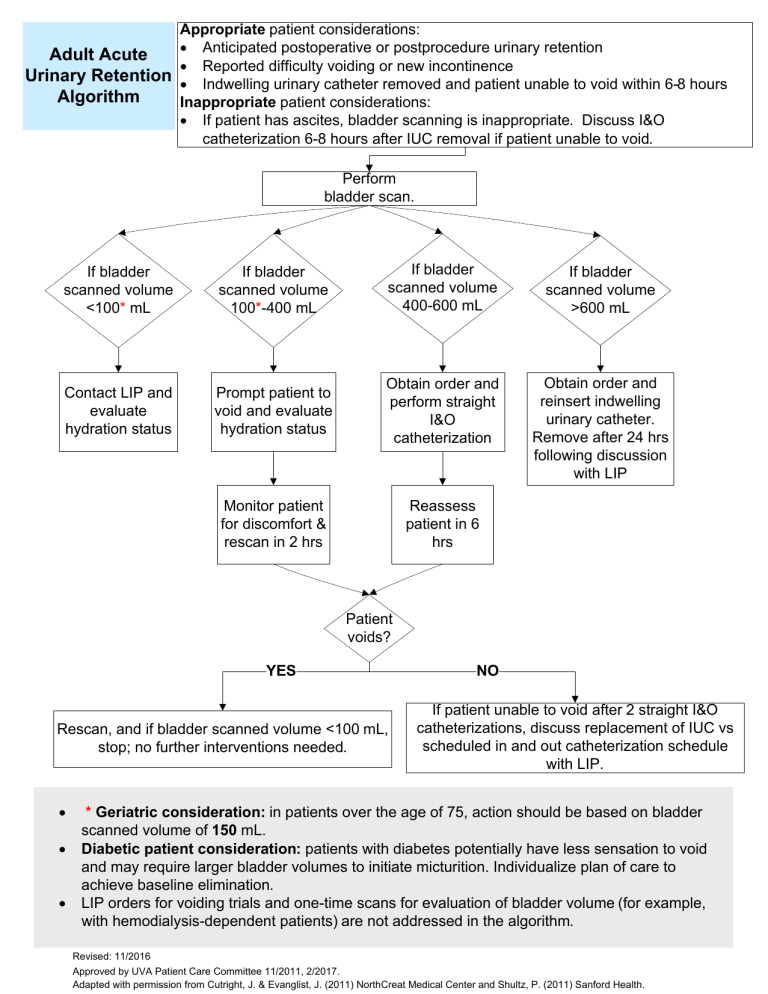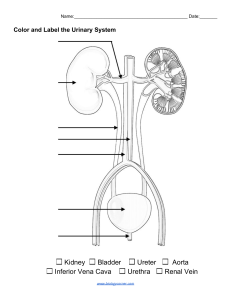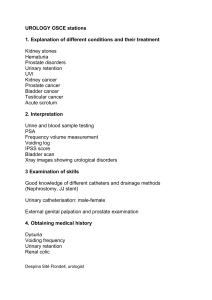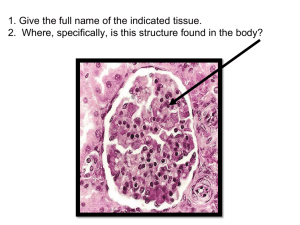
Appropriate patient considerations: · Anticipated postoperative or postprocedure urinary retention Adult Acute · Reported difficulty voiding or new incontinence Urinary Retention · Indwelling urinary catheter removed and patient unable to void within 6-8 hours Algorithm Inappropriate patient considerations: · If patient has ascites, bladder scanning is inappropriate. Discuss I&O catheterization 6-8 hours after IUC removal if patient unable to void. Perform bladder scan. If bladder scanned volume <100* mL If bladder scanned volume 100*-400 mL If bladder scanned volume 400-600 mL If bladder scanned volume >600 mL Contact LIP and evaluate hydration status Prompt patient to void and evaluate hydration status Obtain order and perform straight I&O catheterization Obtain order and reinsert indwelling urinary catheter. Remove after 24 hrs following discussion with LIP Monitor patient for discomfort & rescan in 2 hrs Reassess patient in 6 hrs Patient voids? YES Rescan, and if bladder scanned volume <100 mL, stop; no further interventions needed. · · · NO If patient unable to void after 2 straight I&O catheterizations, discuss replacement of IUC vs scheduled in and out catheterization schedule with LIP. * Geriatric consideration: in patients over the age of 75, action should be based on bladder scanned volume of 150 mL. Diabetic patient consideration: patients with diabetes potentially have less sensation to void and may require larger bladder volumes to initiate micturition. Individualize plan of care to achieve baseline elimination. LIP orders for voiding trials and one-time scans for evaluation of bladder volume (for example, with hemodialysis-dependent patients) are not addressed in the algorithm. Revised: 11/2016 Approved by UVA Patient Care Committee 11/2011, 2/2017. Adapted with permission from Cutright, J. & Evanglist, J. (2011) NorthCreat Medical Center and Shultz, P. (2011) Sanford Health.





